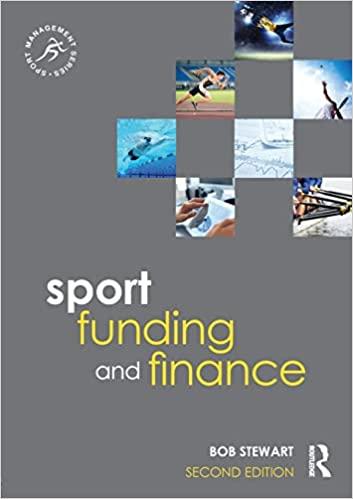Question
I refer to your email, the two questions I have posted are correct. check my account and you will see it. One of the questions
I refer to your email, the two questions I have posted are correct. check my account and you will see it. One of the questions has been posted by others more than two weeks ago without a proper answer to it.
Question 1 is below:
We would like you to consider the arbitrage possibilities in the foreign exchange market. Imagine you have the following information: the spot EUR/USD exchange rate is 0.82, the 2-year risk free rates (continuously compounded) are: 2.25% in USA and 0.35% in Euro zone.
1. Find a two-year EUR/USD forward exchange rate that stems from a no arbitrage condition.
2. Consider the following two situations:
Situation 1: suppose that the two-year forward exchange rate actually equals to 0.90EUR/USD
Situation 2: suppose that the two-year forward exchange rate actually equals to 0.70EUR/USD
For situation 1 provide a detailed arbitrage strategy (step by step) along with the related cash flows, while for situation 2, provide a brief summary of the arbitrage strategies. We would like you to do it from the perspective of both Eurozone and US investors.
Note, that a typical Euro futures contract offered by CME Group for US investors is for 125,000EUR. On the other hand, for Eurozone investors, the Eurexchange offers USD futures contracts of size of 100,000USD.
3. Discuss and compare the arbitrage opportunities for US and Eurozone investors in terms of arbitrage profits. Would you prefer to be a US or Eurozone investor?
4. Discuss the possibility of exploiting the arbitrage strategies for each situation and for each investor in reality. What, in your opinion, are the obstacles in financial markets that would make it difficult for the market participants to earn the arbitrage profit.
Question 2:
We would like you to begin by reading the following research papers:
Bhardwaj, Geetesh, Gary Gorton and Geert Rouwenhorst (2015), Facts and Fantasies about Commodity Futures Ten Years Later, NBER Working Papers 21243, National Bureau of Economic Research, Inc. Available at: http://www.nber.org/papers/w21243.pdf
Cheng, In-Haw and Wei Xiong (2014), Financialization of Commodity Markets, Annual Review of Financial Economics 1(6), 419-44, Available at:https://www.annualreviews.org/doi/10.1146/annurev-financial-110613-034432(earlier version, acceptable for this activity as well is here: http://www.nber.org/papers/w19642 )
In addition, we would also like you to read the following Financial Times articles:
Bunge says China lenders dostorting soybean trade, by Gregory Meyer, February 12, 2015
Commodities explained: Chinas new normal, by Henry Sanderson, February 23, 2015
Investment: Revaluing commodities, by Gregory Meyer and John Authers, June 3, 2015
Financialisation compounds commodity rout by Satyajit Das, December 29, 2015
Speculators march into China commodities by Henry Sanderson, April 27, 2016
A once timeless skill in commodities investing is under threat by Gregory Meyer, July 6, 2018
There has been a debate in academia and the financial industry about the topic of commodity financialisation. Commentators focus on asking if commodity financialisation has significantly influenced commodity markets and the process of commodity price determination.
Please now complete the following two tasks:
Summarise the views presented in the two above research articles and link them to the views that financial industry holds about the effects of commodity financialisation for investment opportunities.
In the light of what you have learned in this course so far (especially of the Theory of Normal Backwardation and Theory of Storage), discuss how, in your opinion, commodity financialisation has affected the relation between spot and futures prices for commodities?
In preparing your answers to the above questions (please write around 300 words for each question), you may find it useful to reflect on the queries below in order to help help direct your thoughts. Please note - you are not required to answer these queries specifically in the written answers to the above two questions.
What does the term commodity financialisation represent?
What were the reasons for commodity financialisation?
Who were the main market participants in commodity futures markets before commodity financialisation and after that?
What were the effects of commodity financialisation and why is this important for market participants as well as for policy makers?
Step by Step Solution
There are 3 Steps involved in it
Step: 1

Get Instant Access to Expert-Tailored Solutions
See step-by-step solutions with expert insights and AI powered tools for academic success
Step: 2

Step: 3

Ace Your Homework with AI
Get the answers you need in no time with our AI-driven, step-by-step assistance
Get Started


